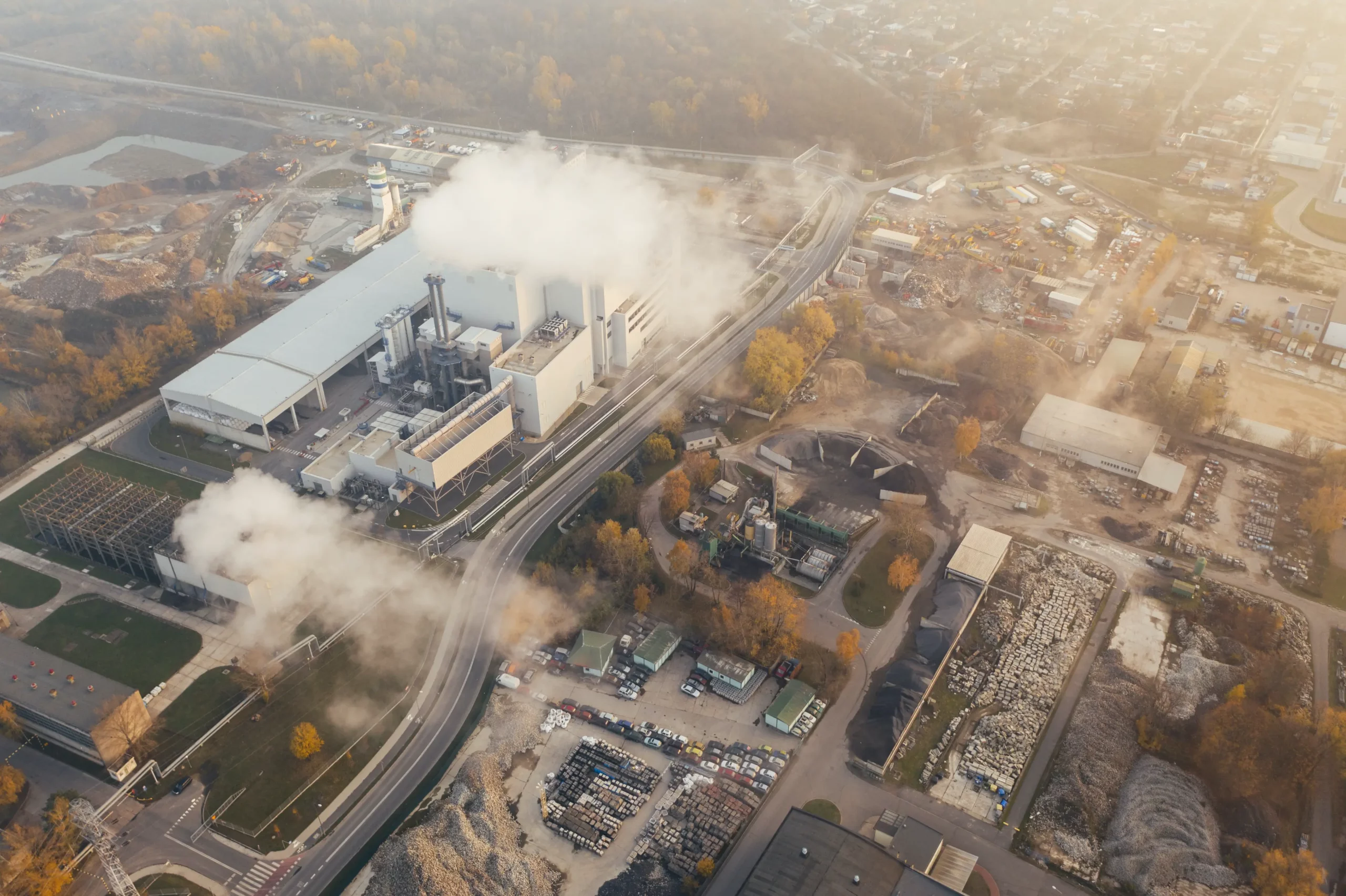
The urgency of addressing climate change has catalyzed the development of mechanisms like carbon offsets and carbon credits. These concepts, pivotal in the environmental sustainability sector, are often confused but serve different purposes in the global effort to reduce greenhouse gas emissions. This comprehensive exploration distinguishes between the two, offering insight into their distinct roles, benefits, and applications across various industries.
What are Carbon Offsets?
The meaning of carbon offset is voluntary action to balance out carbon dioxide emissions by funding projects that reduce or remove emissions from the atmosphere, such as tree planting or investing in renewable energy. They provide a way for individuals and companies to neutralize their carbon footprint, recognizing that some emissions are unavoidable and can be offset elsewhere.
Key Characteristics of Carbon Offsets
-
Participation in carbon offset programs is entirely voluntary, driven by environmental responsibility or corporate sustainability goals, unlike regulatory measures.
-
Projects encompass various initiatives, from forest conservation and reforestation to renewable energy projects like wind or solar power, as well as community-based efforts like improved cookstoves that reduce emissions at the source.
-
Offsets are quantified based on the amount of carbon dioxide they mitigate, allowing for measurable contributions to environmental sustainability.
What are Carbon Credits?

Carbon credits definition is a vital part of regulatory efforts to reduce greenhouse gas emissions. In systems like cap-and-trade, these credits permit a specific amount of emissions and can be allocated or purchased. This setup encourages businesses to reduce emissions by allowing them to trade unused credits, creating a market-driven approach to environmental compliance.
Key Characteristics of Carbon Credits
- Carbon credits are integral to government and international emissions reduction policies, ensuring compliance with commitments like the Paris Agreement.
- They are commonly used in cap-and-trade systems, where companies receive credits for their emission allowances. Firms exceeding their limits must buy credits, while those with extras can sell them, providing an economic incentive for emissions reduction.
- Carbon credits also offer financial incentives for companies to lower emissions, as surplus credits can be sold on the carbon market. This revenue offsets sustainability investments and drives innovation in cleaner technologies.
Differences Between Carbon Credits and Carbon Offsets

Market and Regulation
Carbon Offsets:
- The voluntary market’s flexibility allows for a wide range of project types, including innovative and locally tailored initiatives. This diversity, however, brings challenges in ensuring consistent quality and impact across projects.
- The role of third-party verification becomes crucial, as it assures buyers that their investments are making a real difference. Certification standards like the Verified Carbon Standard and the Gold Standard are key in maintaining trust in the system.
- The market is also influenced by consumer demand and awareness. As more individuals and companies become conscious of their carbon footprint, there’s a growing demand for transparency and proof of impact in offset projects.
Carbon Credits:
- In the regulated market, the price of carbon credits is a critical factor that can influence major corporate and national economic decisions. The costs associated with buying credits can drive companies to innovate and reduce their emissions more efficiently.
- Carbon credits often have a higher price per ton of CO2 equivalent than the carbon offset price in the voluntary market. This is because the regulated market imposes stricter standards and compliance requirements.
- Compliance with carbon credit prices can lead companies to adopt more cost-effective emission reduction strategies, such as investing in cleaner technologies or transitioning to renewable energy sources.
Scope and Scale
Carbon Offsets:
- Offset projects vary greatly in scale, from small community-based initiatives to large, multinational programs. This variability means that offsets can be customized to address specific environmental and social needs of different regions.
- Many offset projects focus on more than just carbon reduction; they often aim to provide co-benefits such as preserving local wildlife, improving air and water quality, or supporting sustainable agriculture practices.
- Community development is another key aspect of many offset projects. They can provide jobs, education, and infrastructure improvements, contributing to the overall well-being of local populations.
Carbon Credits:
- Carbon credit programs, especially those under regulatory schemes, typically involve substantial investments in technology and infrastructure. This can include upgrading existing facilities or developing new, more efficient industrial processes.
- The scale of these programs often requires collaboration between governments, industries, and sometimes international bodies. This collaboration can lead to significant policy and economic shifts as industries adapt to new standards.
- In addition to industrial changes, carbon credit programs can also drive innovation in energy production, waste management, and transportation sectors, all of which have substantial impacts on carbon emissions.
Measurement and Verification
Carbon Offsets:
- The verification process for carbon offsets involves multiple layers of scrutiny to confirm their effectiveness. This includes assessing the environmental impact, ensuring the longevity of the benefits, and determining that the emissions reductions are real and quantifiable.
- Additionality is a key concept in carbon offsets. Projects must demonstrate that the reductions in emissions would not have occurred without the financial incentive provided by the offset market.
- Offset projects often undergo periodic reviews to ensure ongoing compliance with set standards. These reviews are critical for maintaining the integrity of the projects and for providing transparency to buyers.
Carbon Credits:
- In the regulated carbon credit market, compliance is enforced through detailed and stringent monitoring and reporting requirements. This often involves complex methodologies to accurately measure emissions from diverse sources.
- Emission reductions need to be consistent with baseline levels, which are established using historical data and industry benchmarks. This comparison helps to quantify the actual impact of emissions reduction efforts.
- The verification process in the carbon credit system is typically overseen by regulatory bodies or accredited third parties. This ensures an unbiased assessment of compliance with the established standards.
Use and Impact
Carbon Offsets:
- Carbon offsets are now key in global corporate sustainability strategies, helping businesses balance growth and environmental responsibility by actively reducing their carbon footprint while staying economically viable.
- Carbon offsets empower individuals to engage in climate action by taking personal responsibility for emissions, such as offsetting travel, and broadening participation in climate efforts.
- Carbon offset initiatives often include education and awareness efforts, providing valuable insights into carbon footprints, action impacts, and climate change urgency for corporations and individuals.
Carbon Credits:
- Carbon credits drive industries toward sustainable practices and low-carbon technologies, offering economic incentives for cleaner production methods and facilitating a significant shift toward reduced emissions.
- Effective carbon credit programs can strongly impact government policies by showcasing the feasibility and benefits of emission reduction strategies, driving the adoption of more ambitious climate policies, and serving as a catalyst for policy changes.
- Carbon credits are crucial in international climate diplomacy, like the Paris Agreement, as they enable efficient credit trading to achieve emissions reduction targets, fostering global cooperation, reducing overall reduction costs, and enhancing climate action effectiveness.
Types of Projects
Carbon Offsets:
- Many carbon offset projects involve planting trees (reforestation) or restoring forests (afforestation). Trees absorb carbon dioxide from the atmosphere, making them effective in offsetting emissions.
- Carbon offsets frequently fund renewable energy projects, such as wind or solar power installations. These projects generate clean energy and displace the need for fossil fuels.
- Projects that capture methane emissions from sources like landfills and wastewater treatment plants are common carbon offset initiatives. Methane is a potent greenhouse gas, and capturing it prevents its release into the atmosphere.
Carbon Credits:
- Carbon credits often target significant industrial emission sources. These projects involve upgrading industrial processes to reduce emissions substantially.
- While renewable energy projects can also be carbon offsets, carbon credits may support larger-scale renewable energy initiatives that have a more significant impact on emissions reduction.
- Some carbon credit programs fund initiatives that cut across multiple industries. For example, a program might support a technology that captures carbon emissions from various sources, irrespective of the industry.
Criticisms and Challenges
Carbon Offsets:
- Carbon offsets operate in a voluntary market, which has raised questions about the consistency and long-term impact of offset projects. Critics argue that the voluntary nature allows companies to choose when and how to engage in carbon offsetting, potentially resulting in uneven efforts.
- There is an ongoing debate about whether carbon offsets enable companies to merely “greenwash” their image without making substantial reductions in their emissions. Critics argue that offsets should not be a substitute for meaningful emissions reduction within a company’s operations.
Carbon Credits:
- One of the major challenges in the carbon credit system is ensuring that it does not disproportionately burden certain industries or communities, especially in developing countries. The costs and efforts associated with emissions reductions should be distributed equitably.
- Another significant concern is the risk of “carbon leakage.” This occurs when emissions reductions achieved in one area lead to an increase in emissions elsewhere. For example, if carbon-intensive industries relocate to regions with less stringent regulations, it can undermine the overall effectiveness of emissions reduction efforts.
Conclusion

Carbon offsets and carbon credits are complementary tools in the fight against climate change. Understanding their differences is crucial in appreciating how they collectively contribute to a more sustainable future. Both mechanisms enable various sectors to participate in environmental stewardship, whether through direct project involvement or a market-based approach to emissions reduction. As the world continues to focus on sustainability, the relevance and utility of both carbon offsets and credits are likely to grow, playing a pivotal role in global environmental strategies.
About BECIS
BECIS is a sustainable Energy as a Service (EaaS) solution provider. We offer a range of services, including solar energy, bioenergy, cooling, heating, waste heat recovery, compressed air, and energy analytics. Our tailored solutions help companies achieve their renewable energy goals, contributing to a cleaner and more resilient energy system. If you need help with your carbon offset or carbon credits strategy, please Contact us today to learn more about our services.





























Recent Comments